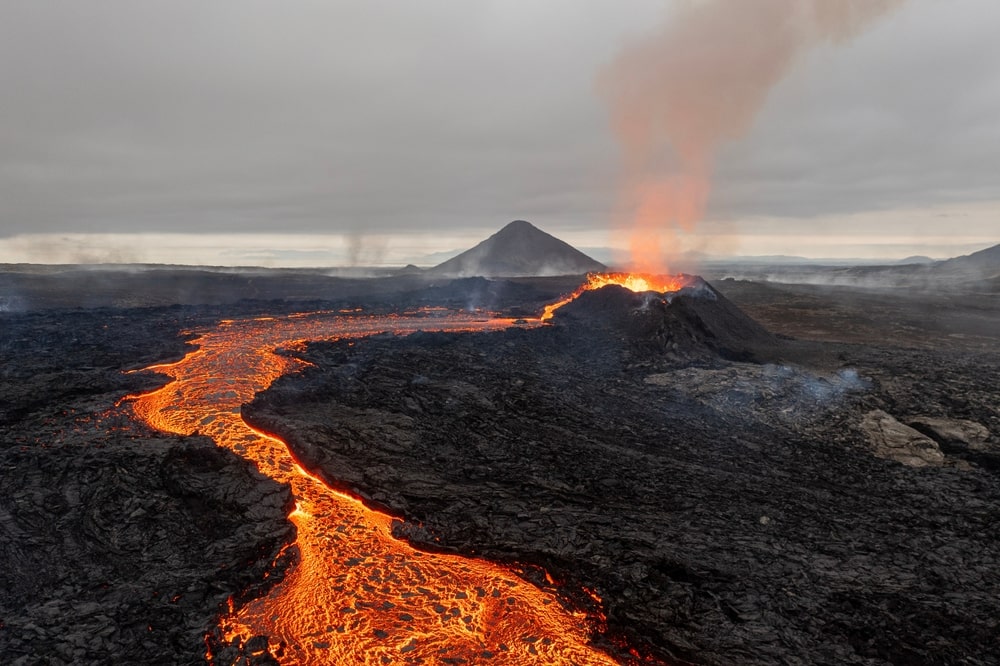
The recent Reykjanes eruption will not have the same impact on air travel as Eyjafjallajökull eruption in 2010, according to experts.
The Reykjanes volcano, finally erupted following weeks of activity including a series of earthquakes as Russell previously discussed.
The Reykjanes eruption has led to comparisons with the Eyjafjallajökull eruption in 2010. The fallout from that eruption resulted in the grounding of airplanes for weeks due to concerns regarding ash cloud damaging the jet engines of planes.
“It is unlikely, but not impossible that there may be some impact on air travel”, said Matthew Watson, professor of volcanoes and climate at the University of Bristol, speaking to the BBC.
“This type of eruption doesn’t generally produce much ash, which is what tends to ground planes”, he added.
The 2010 eruption occurred under a glacier, which is not the case with this eruption. Situating under a glacier meant that the eruption led to large amounts of water interacting with molten rock causing an explosive reaction. This molten rock was turned into ash and glassy particles, forming an ash cloud that scientists feared would damage jet engines. Also, this ash cloud flew straight into the jet stream that spread across Western Europe.
“The difference this time is the volcano is not erupting explosively with water. So, people should not worry about the airspace over Europe because the current eruption is nothing like what happened with Eyjafjallajökull”, said Dr Sam Mitchell, volcanologist at Bristol University, speaking to the BBC.
Following the initial eruption, the magma was moving south-west in the direction of Grindavik. The initial crack in the earth’s surface from the eruption was about 2.1 miles long and was growing rapidly, analysts say.
The Guardian reported that between 100 and 200 cubic metres (3,530 and 7,060 cubic ft) of lava was emerging per second, which was several times more than previous eruptions in the area.
The Icelandic Met Office said that the southernmost point of the fissure, which had grown to 4km (2.5 miles) long, was still 3km from Grindavik.
“The eruption is taking place north of the watershed, so lava does not flow towards Grindavik”, the geologist Bjorn Oddson told the public broadcaster RUV.
There are added fears of the geothermal plant in the southwestern part of the country being impacted by the lava flows from the eruption. However, the temporary walls in place should deflect the lava.

Related Articles
Aviation
Aviation
Aviation